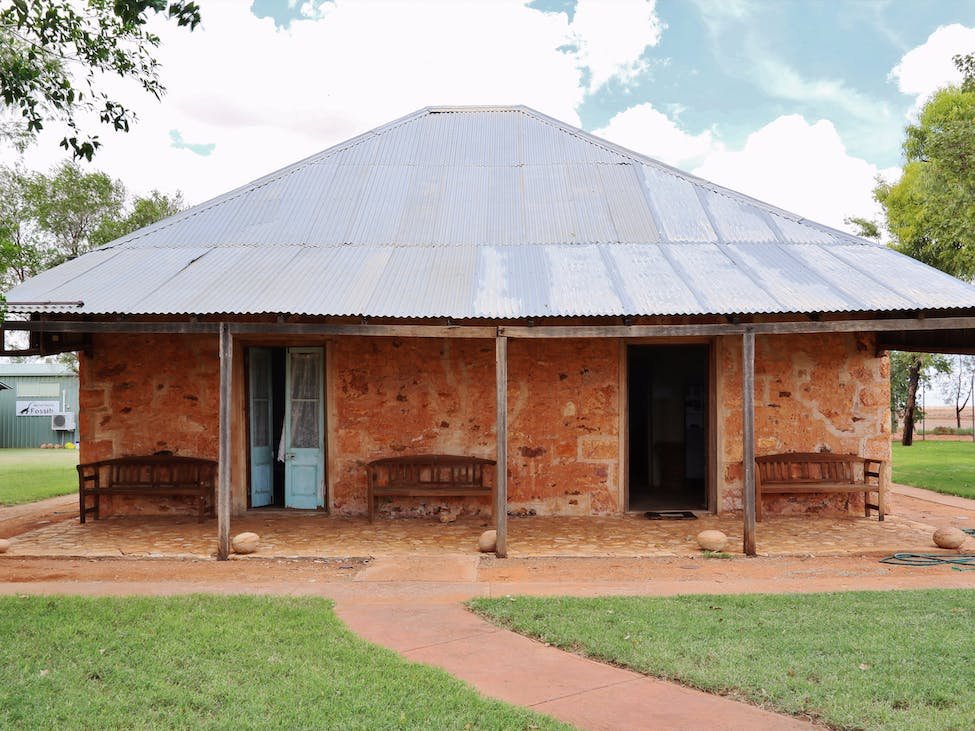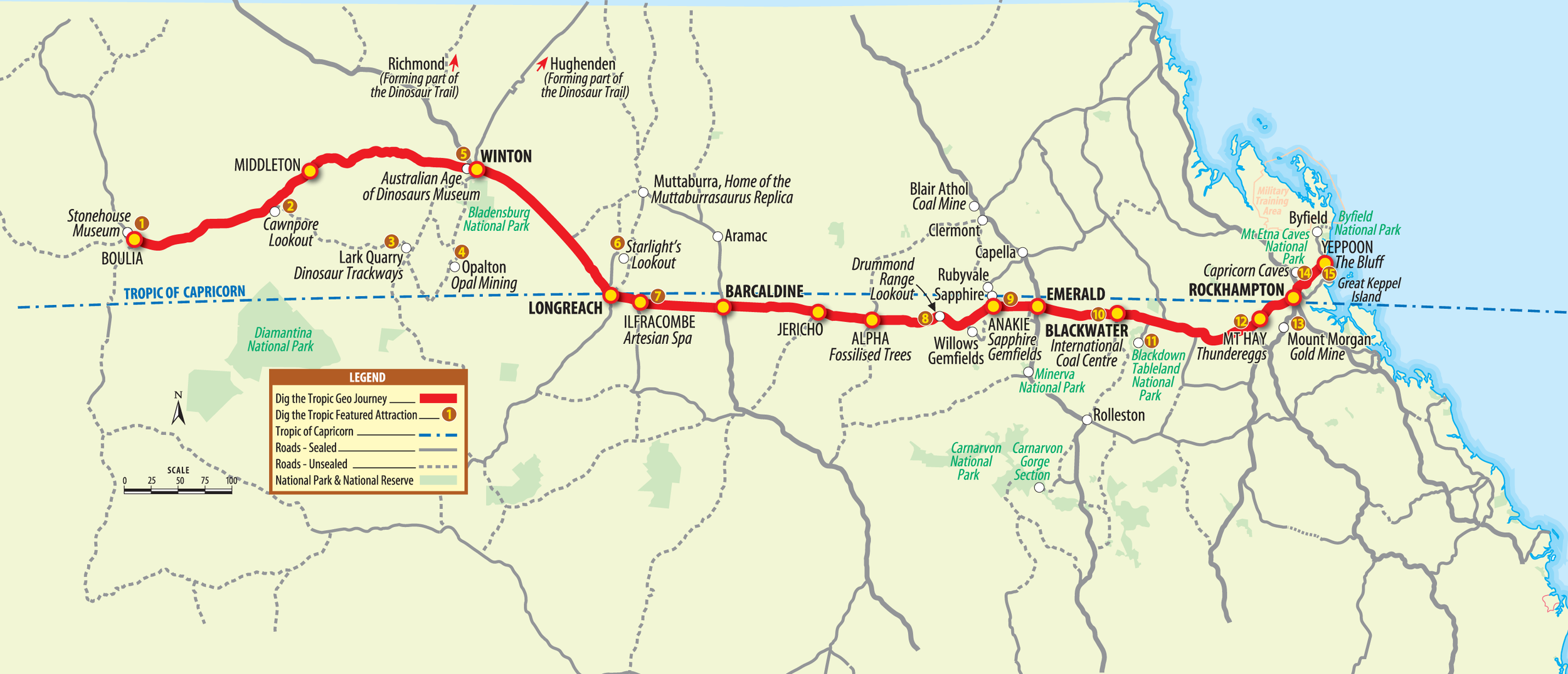
Boulia Heritage Complex
Boulia S 22’54.791, E 139’54.464
During the Cretaceous Period, much of Outback Queensland was part of an extensive Inland Sea. Impossible to believe? Take a journey through time and discover why the ocean filled the Outback; how approaching the Tropic of Capricorn changed Boulia forever; and how the Great Artesian Basin you stand in today links us to this dramatic past.
The Boulia Heritage Complex in Boulia features an extensive vertebrate and invertebrate fossil display. See the remains of large fossil marine reptiles, sharks, and fish that once inhabited this region. The museum’s unique stone design keeps out the harsh summer heat, typical of the Tropic of Capricorn.
How did the Great Inland Sea form and where did it go?
140 million years ago: Sea levels rose submerging much of inland Australia. The weight of this water helped the earth’s crust to subside, allowing further invasion by the sea. Ocean currents covered the land in sand and mud, causing the vast flatness you see today. These layers filled the Great Artesian Basin. Cracks in the clay under that ancient sea now allow drainage within the Basin, and provide the region with its groundwater, or bore water.
110-100 million years ago: Australia still sat well south of the equator, at latitude 55 degrees S. However, the continent slowly travelled north as violent volcanic eruptions and movements in the Earth’s crust tore eastern Gondwana apart. The remains of marine reptiles were fossilized within the Basin’s sediments.
98-95 million years ago: Australia continued its slow drift northward reaching 45 degrees below the equator. The climate warmed and the last inland sea retreated, leaving behind temperate forests and open plains in Queensland’s Outback. There was no grass at this time, instead a healthy understory of ferns.
Today: Boulia sits by the Tropic of Capricorn. Following changes in climate, and decreased rainfall, Australia has dried out. Erosion has stripped much of the ancient sediments away, creating the Jump Up country we see today. Striking mesas such as Cawnpore Lookout in the Lilleyvale Hills, illustrate the results.
Ancient animals we see today
Some ancient animals survived extinction and can still be seen today. Crocodiles, turtles, and small bivalves have been found with the dinosaurs of the Winton Formation. These animals allow scientists to build a picture of the ancient land and seascape present 95 million years ago in Central Queensland.
How can I experience Dinosaur Country?
The Boulia Heritage Complex’s Marine Dinosaur Collection: Take a guided tour with local expert ‘Dinosaur Dick”.
Min Min Encounter: Before departing Boulia, decide for yourself whether the Min Min light is a geological wonder or supernatural phenomenon at the spine tingling Min Min Encounter.
For more information
Visit the Min Min Encounter website for information on Boulia area (Phone: 07 4746 3386).

